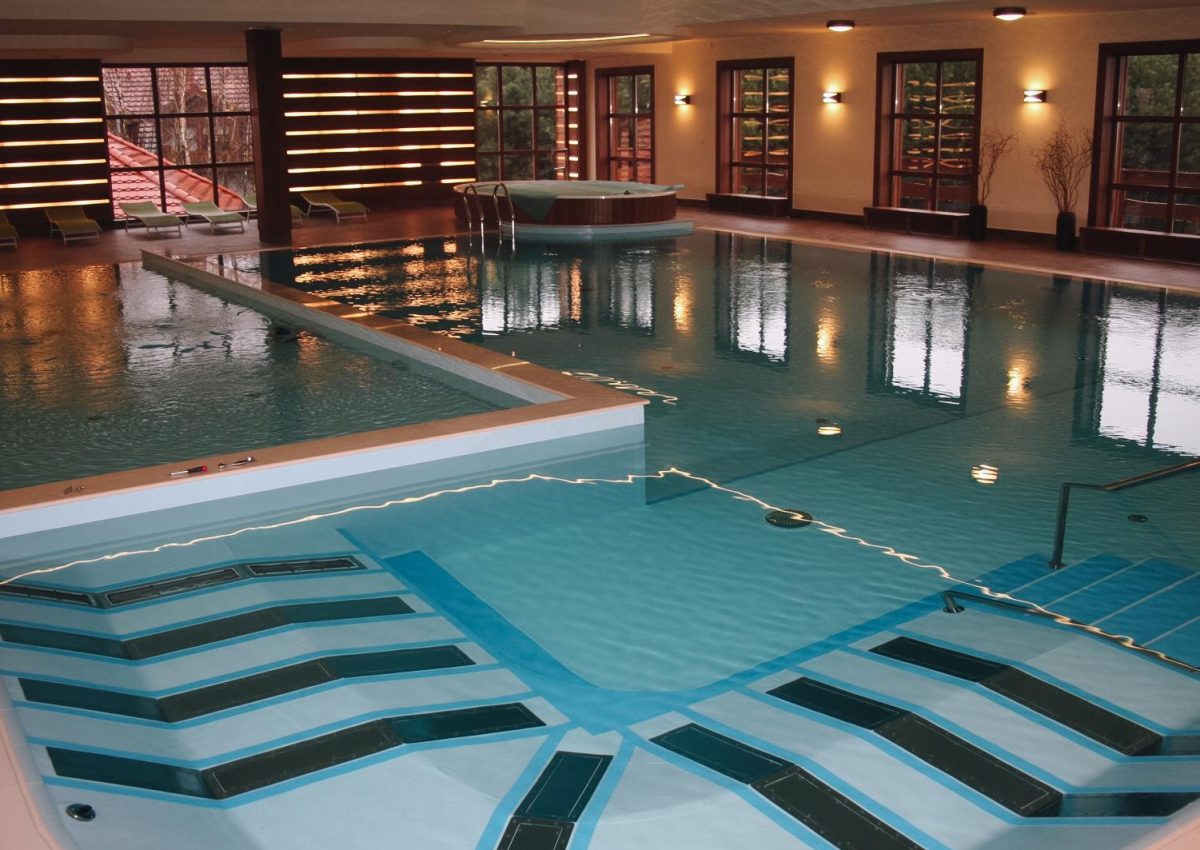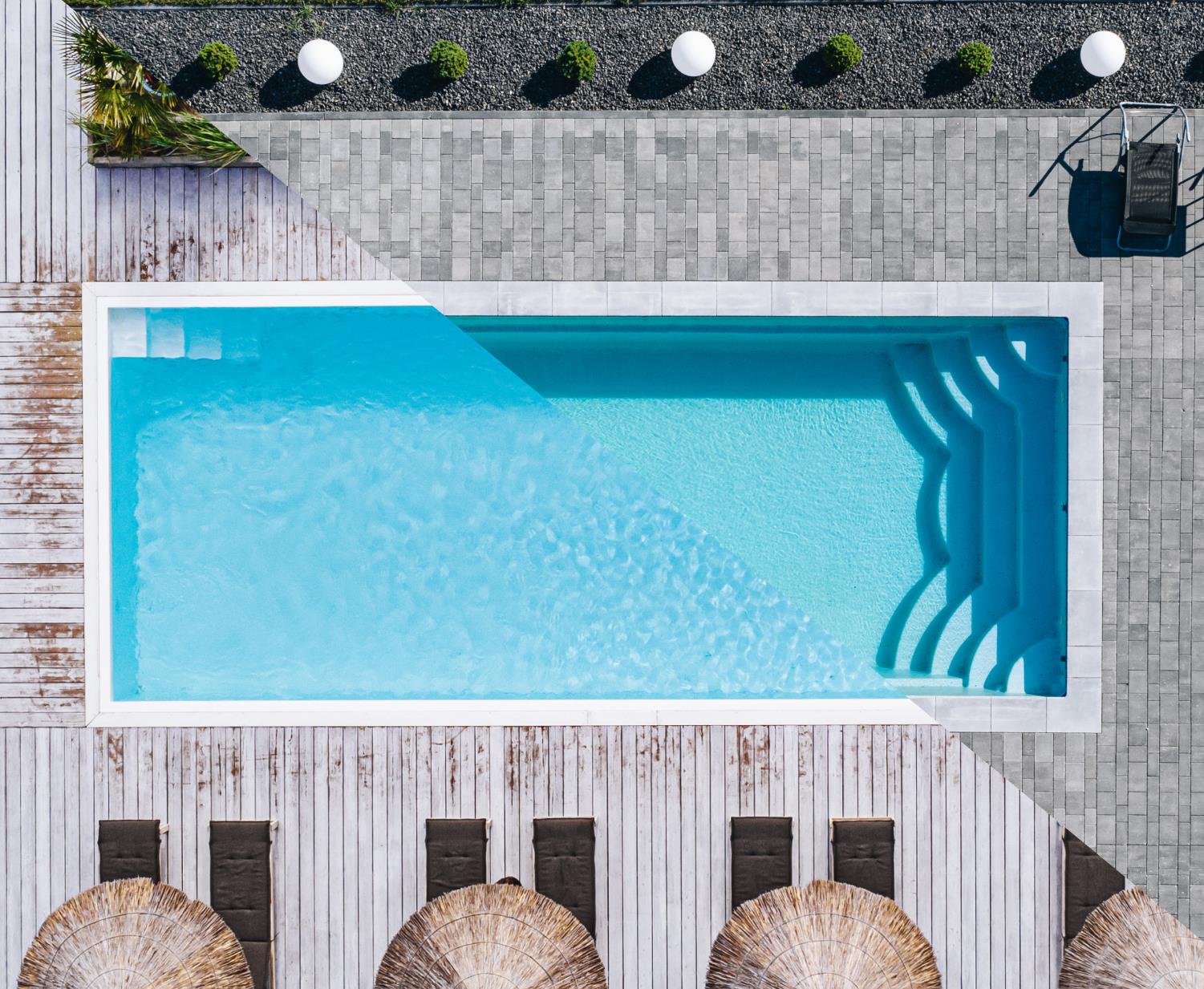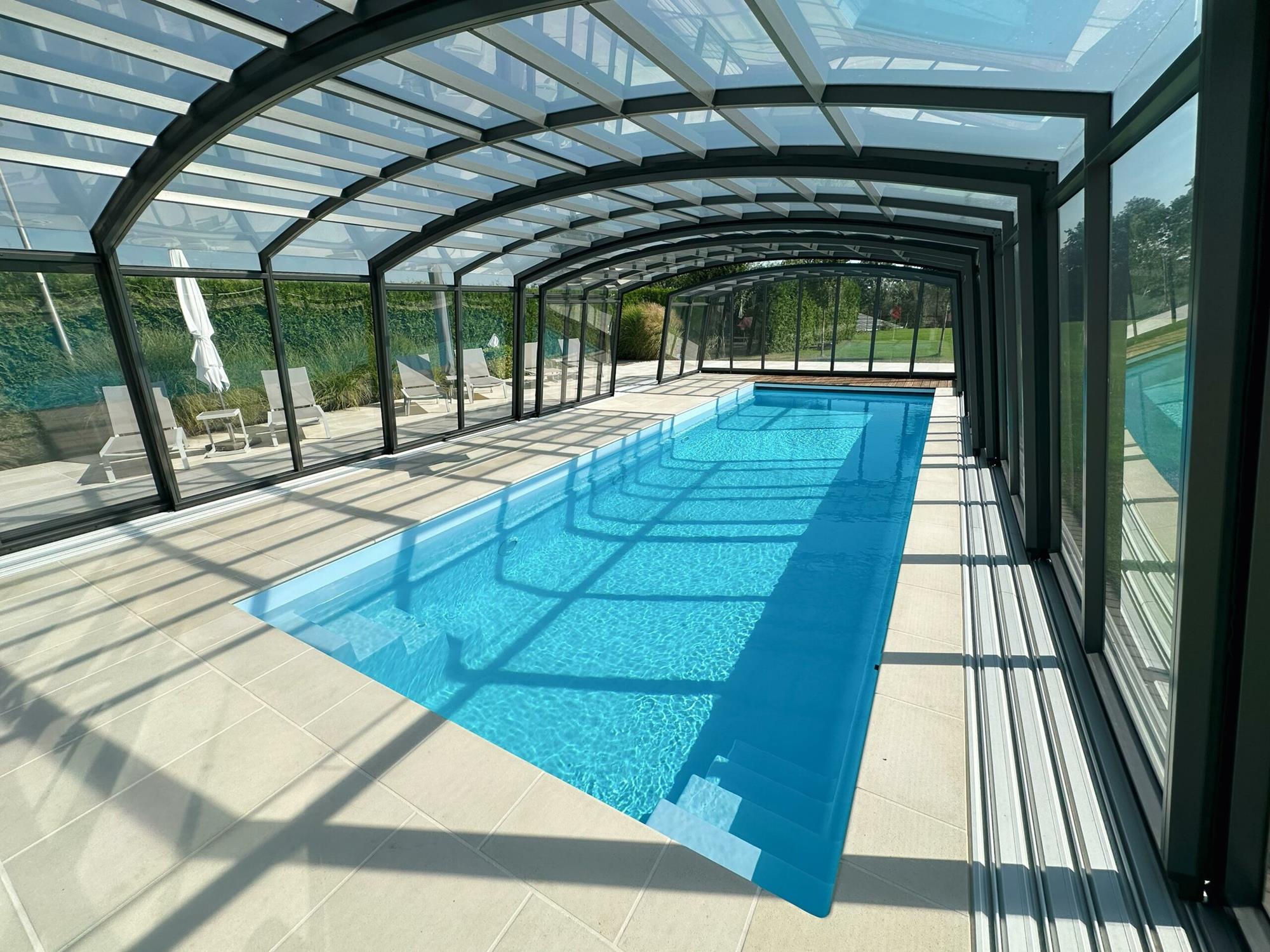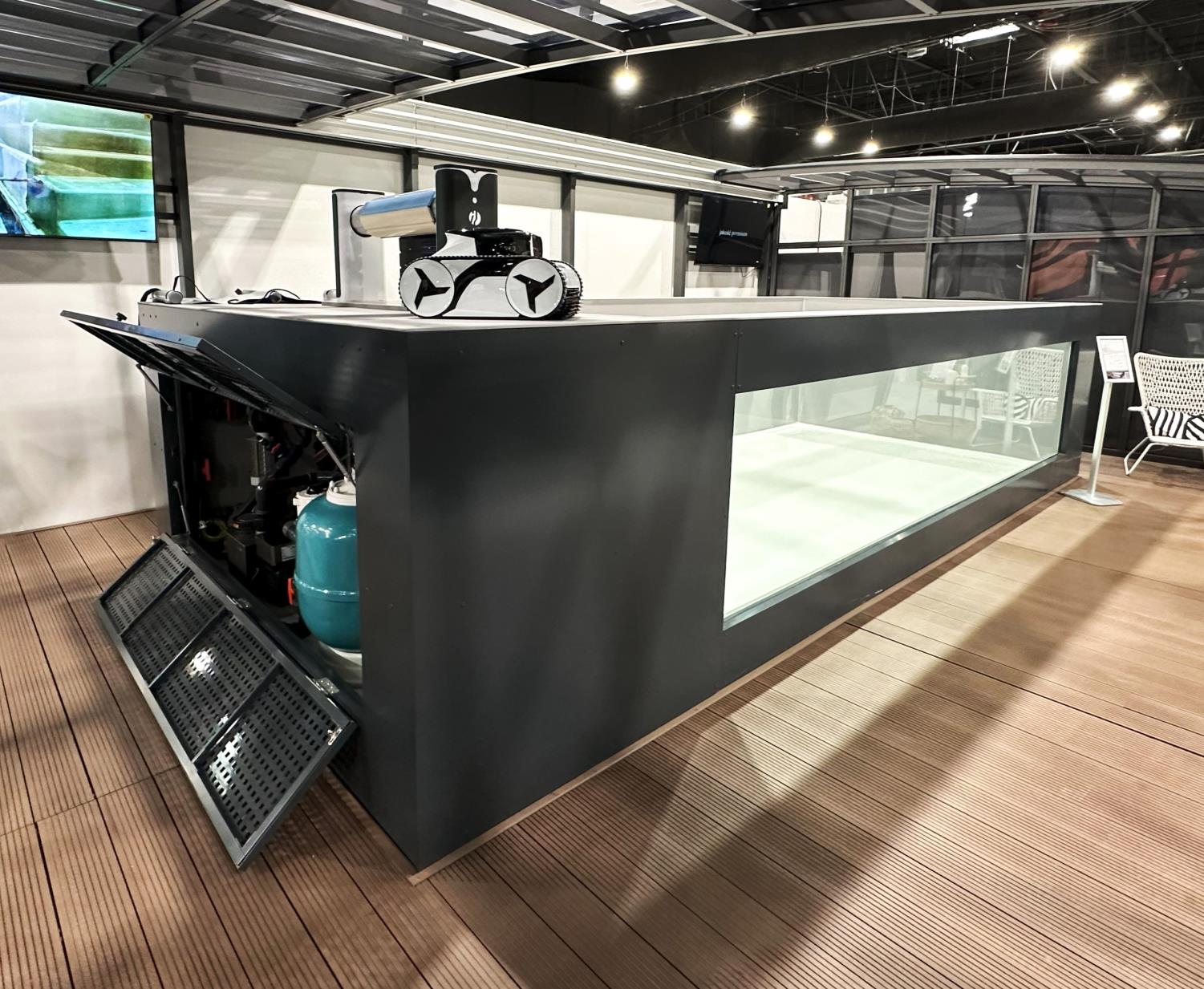
When thinking about a home pool, a masonry pool often comes to mind. It’s no surprise—reinforced concrete pools are among the most durable technologies available. At the same time, a concrete block pool allows for complete freedom in shape and size, enabling effects that are not achievable with other types of pools. A standard garden pool (such as a frame pool) will look significantly different from a concrete pool—so if you want to combine excellent aesthetics with durability, you’ve found the perfect solution.
Building a pool involves constructing the shell from form blocks and concrete blocks or monolithic walls (poured with B20 or B25 concrete). Next, the pool is lined with a membrane and geotextile, and optionally finished with ceramic tiles (known as pool mosaic).
Reinforced concrete pools are chosen not only by private garden owners but also by hotel and guesthouse owners. This is because this pool technology allows for the creation of very large pools in various, often irregular shapes. The pool design can thus be perfectly tailored for commercial properties such as resorts and hotels. If you want to build your own concrete pool, let us present the details.
Before answering the question of how to build a swimming pool from concrete blocks, it is worth presenting the possible swimming pool technologies. The pool construction scheme differs because of the technology you choose – skimmer or overflow gutter.
The skimmer is a rectangular device responsible for the water quality of the pool. It is located in the wall, approx. 10 cm below the top edge of the pool. The skimmer is connected to a pipe system and sucks in water and surface impurities (leaves, insects, dust) via a filter pump. The impurities thus reach a special basket mounted in the skimmer. The water is then pumped into the filter to get back into the pool after cleaning. The skimmer is usually made of plastic (ABS/PVC) or stainless steel.
Private customers usually opt for skimmer technology, as their backyard pools will not be burdened by users as much as hotel pools.
An overflow pool, on the other hand, features a system where water flows over the edge of the pool into a surrounding channel, ensuring a constant level of water and a uniform surface appearance. This system often requires more complex construction and maintenance, making it suitable for commercial settings where high capacity and aesthetic appeal are prioritized.
Choosing between a skimmer and an overflow system will influence the design, maintenance, and overall functionality of your pool.
The construction stages may vary depending on the chosen technology. The duration of the pool construction depends on the complexity of the project. Before purchasing a pool, it’s advisable to contact our advisor who can provide you with a detailed offer, including the cost of a concrete block pool, the total construction time, and the ongoing maintenance costs.
Before deciding to build a concrete pool, consider the following factors:

Are you considering buying a swimming pool? Or do you already have one in your garden? Our newsletter is your source for interesting facts, discounts, and practical pool tips!





